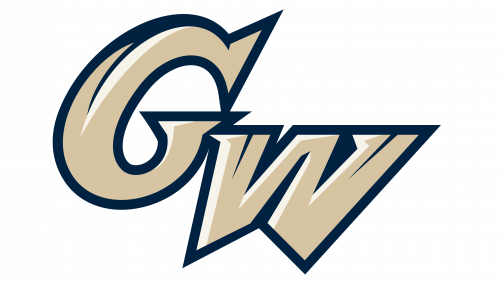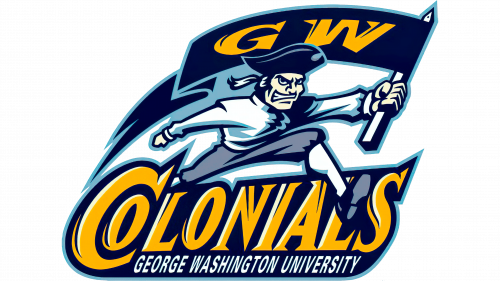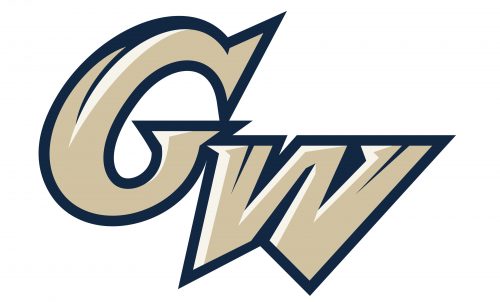 George Washington Colonials Logo PNG
George Washington Colonials Logo PNG
The 24 athletic teams representing George Washington University in Washington, DC, use the distinctive monogram logo in buff and blue.
Meaning and history
The George Washington Colonials, an integral part of the George Washington University, were founded with the establishment of the university’s athletic department. The university, named after the first president of the United States, George Washington, has a rich and storied history in collegiate sports. Over the years, the Colonials have made significant strides in various sports, particularly in basketball, baseball, and soccer, among others. Their most notable achievements include several appearances in the NCAA basketball tournament, where they have showcased exceptional talent and competitiveness. The basketball team’s 2006 advancement to the NCAA Tournament’s second round remains a highlight in their history. Furthermore, the baseball team has consistently demonstrated skill and dedication, contributing to the Colonials’ reputation in collegiate sports.
In recent years, the George Washington Colonials have continued to uphold their tradition of athletic excellence. They remain a prominent fixture in collegiate sports, striving for excellence both in their athletic performance and in the academic success of their student-athletes. The university’s commitment to providing top-notch facilities and support to its teams ensures that the Colonials continue to compete at a high level, reflecting the spirit and values of George Washington University.
What is George Washington Colonials?
George Washington Colonials is the athletic team representing George Washington University in NCAA Division I sports. They compete in various sports, showcasing talent and dedication.
1967 – 1983
The original logo of the George Washington Colonials athletic program, designed in 1967, featured a cool blue-and-white drawing of George Washington running with a football. The drawing was placed on a plain white background and had no other additional elements. This version has stayed with the program for more than fifteen years.
1983 – 1989
The redesign of 1983 created a sleek minimalistic emblem for the teams of the program, where the “GW” dark-gold abbreviation was inscribed inside an emblem with the solid blue football in the iconic tricorne hat in gold. The emblem was accompanied by a bold blue uppercase “Colonials” wordmark, arched at the bottom and executed in a modern sans-serif typeface.
1989 – 1998
In 1989 the color palette of the George Washington Colonials remained untouched, while the concept was dramatically changed. Now the badge featured the slanted geometric “Colonials” inscription in solid blue, outlined in white and gold and decorated by a small golden five-pointed star, which replaced the dot above the “I”. The three vertical bars in gold fill in the negative space between the star and the body of the “I”.
1998 – 2006
When the old George Washington Colonials logo was introduced in 1998, some people were probably surprised to see a cartoonish character in a black hat with a black flag in his hands.
2006 – Today
In spite of the fact that the emblem was somewhat cluttered and lacked a serious approach, it was used until 2009. Only then the iconic monogram was adopted. While there is nothing but two letters, “G” and “W,” they look unique due to the choice of colors and shape.
Basketball
George Washington University has competed in the NCAA Tournament 11 times. They have made six appearances in the National Invitation Tournament and two appearances in the College Basketball Invitational.
Baseball
The first basketball team wearing the George Washington Colonials logo on their uniforms was fielded in 1891. Today, their home arena is Barcroft Park in Arlington, Virginia. The head coach is Gregg Ritchie.
Colors
BUFF
PANTONE: PMS 7502 C
HEX COLOR: #E2CB92;
RGB: (226, 203, 146)
CMYK: (12, 17, 49, 0)
BLUE
PANTONE: PMS 282 C
HEX COLOR: #002654;
RGB: (0, 38, 84)
CMYK: (100, 89, 37, 36)
WHITE
PANTONE: P 1-1 C
HEX COLOR: #FFFFFF;
RGB: (255, 255, 255)
CMYK: (0, 0, 0, 0)













